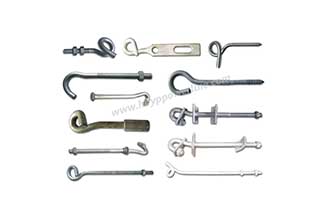Cable Clamp is an accessory for wires and cables. They are used for strapping, clamping, clamping, marking, guiding, and protecting wires and cables. Clamps play an important role in the installation and maintenance of cable systems. Cable clamps are used in home construction, automobiles, rigging, and many other industrial and manufacturing applications. There are many types and sizes of clips.
There are four common types of cable clamps: U type, edge, parallel, and J type.
U-shaped-U-shaped clamps are also called right-angle clamps. The bracket is fixed to the steel beam by bolts, and the bolts are tightened and fixed on the flat or curved top. When pipes (pipes that can pass through power cables) need to be installed perpendicular to the beam, U-shaped clamps are usually used. It is not recommended to use curved clamps (such as U-shaped) for wire harnesses with a diameter of more than 1 inch, because the weight of the wire may exceed the structural performance of the clamp.
The edge clamp can be attached to the thin edge bundle of catheter steel by using clamping jaws to clamp tightly on the catheter. They are very suitable for vertical installation. When choosing an edge fixture, it is important to consider the weight that the fixture can bear per 100 units of distance.
The parallel-parallel clamp has two jaws: one holds the catheter in place, and the other is thinner, which is fixed on a steel beam. When the conduit runs parallel or along the length of the steel beam, it is best to use parallel clamps. J-shaped hook-J-shaped hook cable clamp has a unique "J" shape, which can be hooked on the conduit. Install the conduit inside, then use nuts or bolts to fix the threaded top of the clamp to the steel beam. J-hook cable clamps can be used for parallel and vertical applications because the conduit is directly set on the beam.

Cable Clamp
Cambridge Cable Clamps usually come in a variety of colors and sizes and can be used in different applications. Important specifications to consider when searching for cable clamps include:
The shape and size of the item or system to be fixed. The maximum diameter refers to the maximum diameter of the wire and cable bundle. If the clamp is larger than the pipe, foreign matter may enter the space between the two pieces and cause damage due to wear. If the conduit is larger than the clamp, deformation and strain may occur on the mounting feet of the clamp, and the clamp may be damaged. A good rule of thumb is to use a minimum of 25 pounds of tension on the catheter when movement is not desired, and use a maximum of 10 pounds of tension when movement is required.
Temperature range-the complete ambient operating temperature range required. It is also important to pay attention to whether the temperature will change or whether it is continuous.
There is a surrounding fluid-the type of fluid in the system is important, and whether the fixture will be immersed in or splashed by the fluid is also important. The area is shocked by vibration.
In the available installation area and clearance-in order to provide the best structural advantage, the clamping installation should be located in the curved interior.
The installation position (inverted, horizontal, vertical)-The clamps and ducts should always be installed at 90°C. This will prevent the built-in pre-tightening force, and clamp deformation and failure. When installing the pipe to a vertical structure, the bolts should be above the pipe so that the static force is not opposed to the mounting feet. Such as line surge or structural flex-conduit should be supported as close as possible to the end of the conduit.
If you will install the clamp before installing the conduit or wiring harness.
If the wire clamp is placed on the wiring or conduit before installation.
If the clamp and conduit will be wired at the same time.
The stress relief device protects the lifeline of electrical products by absorbing the pushing and pulling forces that may be applied to flexible wires, cables, or pipes.
+86 319 878 9350
+86 156 1304 7999
+86 319 878 9350
NanYan, DongHuan Road, Shahe, Hebei China
Copyright © Hebei Yipeng Line Equipment Co., Ltd. All Rights Reserved. | Sitemap Powered By 
